 In writer/director Julia Leigh’s erotic reworking of the fairy tale “Sleeping Beauty” (Australia) we meet another stunning blonde: Emily Browning as Lucy, a desperate college student using her looks to make a living in the sex industry. Though I admired Browning’s performance, the movie was disappointingly sluggish and dull.
In writer/director Julia Leigh’s erotic reworking of the fairy tale “Sleeping Beauty” (Australia) we meet another stunning blonde: Emily Browning as Lucy, a desperate college student using her looks to make a living in the sex industry. Though I admired Browning’s performance, the movie was disappointingly sluggish and dull.The Marilyn Chronicles at Chicago film fest
 In writer/director Julia Leigh’s erotic reworking of the fairy tale “Sleeping Beauty” (Australia) we meet another stunning blonde: Emily Browning as Lucy, a desperate college student using her looks to make a living in the sex industry. Though I admired Browning’s performance, the movie was disappointingly sluggish and dull.
In writer/director Julia Leigh’s erotic reworking of the fairy tale “Sleeping Beauty” (Australia) we meet another stunning blonde: Emily Browning as Lucy, a desperate college student using her looks to make a living in the sex industry. Though I admired Browning’s performance, the movie was disappointingly sluggish and dull.Dark dramas shine at Chicago International Film Festival
Dark domestic dramas led the fine slate of high-style movies at the 47th Chicago International Film Festival, which boasted a lineup of nearly 200 titles.
In “We Need to Talk About Kevin” (UK) by Lynne Ramsay, neo noir meets New Age parenting in a haunting thriller. We witness, in jagged pieces that jump back and forth in time, the unthinkably brutal rupture of a dysfunctional but not entirely unhappy family.
Creating buzz at many fests, Tilda Swinton will doubtless continue to earn acclaim for her wrenching portrait of a mother struggling to love her son Kevin (Ezra Miller) who comes into the world seething with anger. Chicago-born John C. Reilly plays her denial-prone husband. Rich with visual metaphor and captivating performances (though the script is not fully there), this is destined to be a neo-noir classic. (“We Need to Talk About Kevin” does not release in the US until February.)
I doubt Finnish director Zaida Bergroth had “Mildred Pierce” in mind when she made “The Good Son,” which won the top prize in the new directors competition. But I kept thinking of Michael Curtiz’s 1945 classic starring Joan Crawford as a flawed single mother of two daughters, the elder of whom is a bit of a snake, as I watched Elina Knihtila portray Leila, a flawed single mother of two sons, the elder of whom (Samuli Niittymaki as Illmari), is a bit of a psycho.
Eero Aho plays Leila’s new love interest, a kindly writer named Aimo. Anna Paavilainen is excellent as Illmari’s girlfriend as is Eetu Julin as Unto, the younger brother. Arresting images, subtle acting, nicely paced.
Arguably, “A Dangerous Method” (Germany/Canada) by David Cronenberg could be classified as a domestic drama, dealing as it does with the long-term adulterous relationship between renowned Swiss psychiatrist Carl Jung (Michael Fassbender) and a patient-turned-student-of-psychoanalysis Sabina Spielrein (Keira Knightley). Viggo Mortensen is Sigmund Freud; Sarah Gadon is Jung’s wife. This finely crafted film is already generating Oscar buzz.
“Martha Marcy May Marlene” (US) is the kind of film that leaves you reeling, then lodges in your mind for days. Elizabeth Olsen (sister of Ashley and Mary Kate) stars as a young woman who escapes from an evil cult and struggles to reconnect with her estranged sister (Sarah Paulson) and her new brother-in-law (Hugh Dancy). Writer/director Sean Durkin’s fragmented narrative swerves from past to present; the tension mounts masterfully to a claustrophobic level. Thoroughly mesmerizing, but as much as I admired Olsen’s presence and vulnerability (she may be an Oscar contender), I felt no sympathy for her character. John Hawkes (of “Winter’s Bone”) is unforgettable as the warped cult leader.
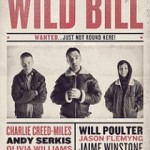 English actor Dexter Fletcher makes an impressive directorial debut with “Wild Bill.” Though the story is essentially rooted in cliché, the fresh writing and powerful acting inject vitality into this tale of an ex-con (Charlie Creed-Miles) reconnecting with his young sons (Will Poulter and Sammy Williams) in London’s East End.
English actor Dexter Fletcher makes an impressive directorial debut with “Wild Bill.” Though the story is essentially rooted in cliché, the fresh writing and powerful acting inject vitality into this tale of an ex-con (Charlie Creed-Miles) reconnecting with his young sons (Will Poulter and Sammy Williams) in London’s East End.
A desire for a father-daughter reunion drives the ex-con (Mark Pellegrino) in “Joint Body” by Brian Jun. But he gets sidetracked when he meets a stripper (Alicia Witt) in a seedy residential motel in downstate Illinois and the two end up on the run. (The term joint body refers to a convict who works out and walks the walk with confidence.)
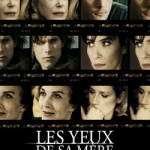 Too melodramatic to be a real thriller, Thierry Klifa’s “His Mother’s Eyes/Les Yeux de Sa Mère,” (France) about a writer’s plan to ingratiate himself into a fractured family, is still intelligent, engrossing and features an easy-on-the-eyes cast, which includes ever-lovely Catherine Deneuve, Nicolas Duvauchelle, Géraldine Pailhas and Jean-Baptiste Lafarge.
Too melodramatic to be a real thriller, Thierry Klifa’s “His Mother’s Eyes/Les Yeux de Sa Mère,” (France) about a writer’s plan to ingratiate himself into a fractured family, is still intelligent, engrossing and features an easy-on-the-eyes cast, which includes ever-lovely Catherine Deneuve, Nicolas Duvauchelle, Géraldine Pailhas and Jean-Baptiste Lafarge.
And though definitely not a noir, the festival’s grand-prize winner, “Le Havre” (Finland/France) by Aki Kaurismaki, recounts the forming of a temporary, makeshift family. A working class French man (André Wilms) befriends and protects an African boy (Blondin Miguel) who lands illegally in Le Havre on the way to reuniting with his mother in London. Lit and composed like an Old Master painting, Kaurismaki’s film brims with humanity and humor.
Tomorrow: More about movies at the festival
‘Mulholland Dr.’ takes us through shiny dreams and devastating nightmares
Mulholland Dr./2001/Universal, Studio Canal/145 min.
Let’s face it, reality sucks. So, on second thought, let’s not face it.
Instead, pluck an image from your fantasy du jour, then jump into your limousine, Lamborghini roadster or sedan chair and head to “Mulholland Dr.” for poolside cocktails with your dear chum writer/director David Lynch.
Or just put your feet up and watch the movie. This terrific neo-noir mystery is a story within a story within a story within a story about Hollywood, its shimmering promise and dark secrets, its cut-throat power and caustic pain, and its huge cast of heroes, hopefuls, heavies and hangers-on. The film is also a visual poem and Lynch’s highly personal, surrealistic imagery resonates long after you see it.
Lynch’s Tinseltown reminds me of F. Scott Fitzgerald’s valley of ashes in “The Great Gatsby,” the famous Hollywood sign, like the eyes of Doctor T. J. Eckleburg, set amid wild delight and staggering decadence.
Lynch’s detractors complain that his motifs – portals and shadowy rooms, lurking danger beneath an innocent exterior, secret languages, nightclub singers and stages, for example – are shallow gimmicks that Lynch leans on from film to film. (His other work includes: “Eraserhead” 1977, “Blue Velvet” 1986, “Wild at Heart” 1990, the TV series “Twin Peaks” 1990-91, “Lost Highway” 1997, “Inland Empire” 2006).
Nevertheless, in each film, Lynch creates a unique cinematic world that takes your breath away with its striking beauty, sly humor, intense characters and uncommon depth. In “Mulholland Dr.” Lynch invites us into a shiny dream as well as a devastating nightmare. Though it’s a contemporary setting, there are so many retro references that the story almost feels like a period piece.
In part one, we meet golden girl Betty Elms (Naomi Watts), a young actress who’s just arrived in Hollywood. Sweet, perky and hopeful, Betty has a retro-chic apartment to live in and an audition set up for a role in a major movie. Just in case she needs to borrow a cup of sugar, her charming landlady Coco (Ann Miller, in her last movie role) is ready and waiting to help.
Nothing throws this girl, not even finding a stranger using her shower. This particular mystery woman calls herself Rita (Laura Elena Harring) because she can’t remember her own name or anything else about her life. Arrestingly beautiful, with raven hair and ravishing features, Rita appears to be on the run from some nefarious mobsters but she doesn’t know why, natch.
Nor does she have any idea why she has a key and $50,000 in her handbag, which the girls hide in a hatbox. (Well done! If you’ve picked the right frock and got your lipstick on straight, why bother to carry cash?)
Betty decides that Rita needs to retrace her steps in order to regain her identity. But first Betty must prepare for her audition. Rita helps her rehearse and the next day Betty wows everyone in the room, including her debonair co-star Jimmy Katz (Chad Everett). Afterward, Betty is whisked away to meet edgy young director Adam Kesher (Justin Theroux), who’s casting a flick called “The Sylvia North Story.”
Later, over coffee at a diner (Lynch always loves a diner), Rita remembers the name Diane Selwyn; this leads them to an apartment where they make an unsettling discovery. That night, Rita has a few tricks up her sleeve for Betty – first a seduction, then a visit to a strange, nearly empty dive bar called Club Silencio, where Rebekah Del Rio, playing herself, performs a stunning a capella rendition of Roy Orbison‘s “Crying.” When they return home, Rita uses her key to open a box and Betty disappears.
There are several subplots involving a fantasy creature in a diner parking lot; a hitman (Mark Pellegrino) who steals an address book, then casually kills three people; and slick-suited heavies (including Dan Hedaya as Vincenzo Castigliane) pressuring Kesher to cast unknown blonde actress Camilla Rhodes (Melissa George) in his movie. Oh, and Kesher’s wife (Lori Heuring) is sleeping with the pool guy (Billy Ray Cyrus).
In part two, Lynch rejiggers this world. The glossy, fun-filled days and Betty’s wholesome aspirations are gone, replaced by pitch-black, sinister nights, acts of betrayal and quests for revenge.
“Mulholland Dr.” – whose abbreviated title may be a tribute to Billy Wilder’s “Sunset Blvd.” – deserves high praise, for its look, its performances, its humor, its risks, its weirdness. Angelo Badalamenti (he has a cameo as gangster Luigi Castigliane, a man who takes espresso extremely seriously) contributes a stellar soundtrack and Peter Deming’s cinematography, with bright light and saturated color, is a treat.
Most of all, though, Lynch’s direction is superb. So is the acting. Watts easily shifts from fluffy and fierce, graceful to gritty. Similarly, Harring makes a fluid transition from lost soul to lady in charge. Though the plot is sometimes thorny, the actors are breezy and believable.
To think that Renée Zellweger received a Best Actress Oscar nom for “Bridget Jones’s Diary” and Watts didn’t make the list is baffling. (Halle Berry won that year for “Monster’s Ball.” The other contenders were Sissy Spacek for “In the Bedroom,” Nicole Kidman for “Moulin Rouge” and Judi Dench for “Iris.”)
Lynch was nominated for a Best Director Oscar. Ron Howard won for “A Beautiful Mind,” which also won Best Picture. At Cannes, however, “Mulholland Dr.” received the Palme d’Or for best direction. (Lynch shared the honor with Joel Coen for “The Man Who Wasn’t There.”)
Of all that’s been written about “Mulholland Dr.” critic Stephanie Zacharek sums it up best: “‘Mulholland Dr.’ is the most womanly of David Lynch’s movies. … It’s wily and sophisticated, stylized like an art deco nude, and suffused with so much feline glamour and beauty and naked eroticism that its chief aim seems not to be to dazzle us with its typically Lynchian plot twists, but to seduce us into its sway and keep us there. This is a movie with hips.”
Speaking of seducing, I must dash back to my fantasyland. I’m meeting with my agent so I can sign that $3 million book deal. Then, I’m off to dinner and dancing with Clive Owen at the Stork Club. Ta ta!
‘Mulholland Dr.’ quick hit
Mulholland Dr./2001/Universal, Studio Canal/145 min.
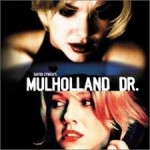 Two parallel stories and a bizarre tangle of story threads – by turns sumptuous and sinister – courtesy of visual poet David Lynch. A bright young actress (Naomi Watts) comes to Hollywood to pursue her dreams.
Two parallel stories and a bizarre tangle of story threads – by turns sumptuous and sinister – courtesy of visual poet David Lynch. A bright young actress (Naomi Watts) comes to Hollywood to pursue her dreams.
With talent, perseverance and a bit of luck, she’ll soon be the toast of the town, right? Think again, doll. Exciting work from an excellent cast, particularly from Watts and co-star Laura Elena Harring.
‘Drive’ is full of killingly well-executed action scenes, sharp acting, ironic dialogue and ultra-snazzy visuals
Drive/2011/100 min.
By Michael Wilmington
“Drive” is a gut-twisting LA action movie, stripped to the bone, but also drenched with visual style. It’s about a driver played by Ryan Gosling who falls in love with the woman down the hall in his building, nervous Irene (Carey Mulligan), whose husband Standard (Oscar Isaac) just got out of jail and is being forced into another heist by shady moneymen Nino (Ron Perlman) and Bernie (Albert Brooks).
The show is full of killingly well-executed action scenes, sharp acting, ironic dialogue and ultra-snazzy visuals – all of which won Nicolas Winding Refn the Best Director prize at the last Cannes Film Festival. Hossein Amini wrote the script based on James Sallis’ novel.
It’s a movie built largely out of our memories of other movies, but that’s not necessarily bad. We know where this movie is coming from as soon as we know Gosling’s character has no name but The Driver – just like Ryan O’Neal in Walter Hill’s 1978 “The Driver.”
Neo-noir is this picture’s middle name, and its forebears include “The Driver” (of course); John Boorman’s 1968 “Point Blank” with Lee Marvin; Peter Yates’ 1968 “Bullitt” with Steve McQueen; and Michael Mann’s outlaw movies “Thief” (1980) and “Heat” (1995). As you’d expect from a movie with that kind of lineage, “Drive” begins with a great chase and gives us a little dip under Gosling’s opaque exterior by letting us know that he’s a movie stunt driver by day and a getaway driver at night. (He allows his robber/clients only five minutes to get back to his car).
He’s also a prospective race car driver, for whom his auto shop owner/patron Shannon (Bryan Cranston) wants to get sponsorship. Shannon turns to the very same criminal financiers, Nino and Bernie, who want Standard to pull a job for them, for which Standard wants The Driver to drive. And The Driver does, mostly because he’s in love with Standard’s wife, Irene, and his little son Benicio (Kaden Leos).
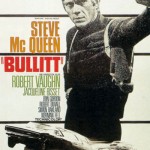 The movie alternates its always-thrilling action scenes with more emotional character stuff – including a brilliant turn, Oscar-worthy really, by Brooks as the falsely good-natured gangster and ex-movie producer Bernie. (In the ’80s, says Bernie, he did action stuff that some critic called “European.”) The classy cast sometimes seems to be getting paid for holding it all back, especially Gosling, whose minimalism here makes vintage Eastwood or McQueen look like John Barrymore.
The movie alternates its always-thrilling action scenes with more emotional character stuff – including a brilliant turn, Oscar-worthy really, by Brooks as the falsely good-natured gangster and ex-movie producer Bernie. (In the ’80s, says Bernie, he did action stuff that some critic called “European.”) The classy cast sometimes seems to be getting paid for holding it all back, especially Gosling, whose minimalism here makes vintage Eastwood or McQueen look like John Barrymore.
As the film goes on, it gets more violent. The violent scenes are short but extremely bloody. Since the movie plays some of its carnage with razor-sharp comic timing (especially Brooks’ scenes), it becomes more and more disturbing as well. There’s something sinister and icily detached about that comic violence. “Drive” suggests a world where brutality is rampant, where greed rules, where immorality thrives.
Though Refn may not have really made a classic neo-noir, it’s a very good effort. A little more Albert Brooks maybe. Not too much. Five minutes or less.
Albert Brooks photo by Jim Spellman/WireImage/The New York Times
An impeccable noir and an insightful portrait: ‘Love Crime’
Love Crime/2010/UGC/106 min.
“Love Crime,” a splendidly suspenseful ride, just might be the late Alain Corneau’s best film. A great script, excellent actors, perfect pacing and a terrific final twist make this a must-see movie.
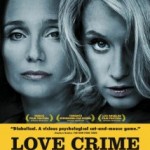 Sleek and savvy Christine (Kristin Scott Thomas), a powerful exec at a multinational company, seems to have a charmed existence – success, style, a glitzy social life and a gorgeous lover, Philippe (Patrick Mille). Reporting to Christine is ambitious, hard-working and eager-to-please Isabelle (Ludivine Sagnier).
Sleek and savvy Christine (Kristin Scott Thomas), a powerful exec at a multinational company, seems to have a charmed existence – success, style, a glitzy social life and a gorgeous lover, Philippe (Patrick Mille). Reporting to Christine is ambitious, hard-working and eager-to-please Isabelle (Ludivine Sagnier).
Their relationship is subtle and complex – a mix of admiration and affection, rivalry and rude awakenings. Isabelle’s first jolt is when Christine takes credit for Isabelle’s work. (In corporate life, really?) Acting as a pawn in their mind games and manipulation is Philippe, one of their many male colleagues. It’s not long before barbed convo at the water cooler shifts to a malevolent life-and-death battle. (In corporate life, really?) We see that Isabelle’s methodical, meticulous approach applies to every project she tackles, at the workplace and beyond.
Corneau, who died last August at age 67, referred to the film as one of his little Fritz Lang labyrinths. “It can be summed up very simply,” he said. “After you have committed the perfect crime, of which you will definitely be suspected, how can you prove you are innocent by making yourself look guilty?”
“Love Crime” is an impeccable noir with a stark look and restrained palette from director of photography Yves Angelo. It’s also an original, insightful portrait of two characters’ identities. Corneau, aided by co-writer Natalie Carter, explored fresh terrain by focusing on female characters. “I’ve recently discovered how exciting it is to have women in leading roles,” said Corneau. “I thought, without knowing why, that it would be more spectacular if the labyrinthine plot were feminine.”
Spectacular it definitely is; and of course sad that his first foray into the inner lives of women was also his last.
And one more thing. There’s particular attention paid to Isabelle’s blonde hair. She starts out with a mane of slightly messy curls; as she climbs the corporate ladder, she taps her inner Veronica Lake for a peek-a-boo effect that’s smoothly sexy and seductive. Looking good is always key, especially when you’re up to no good.
“Love Crime” opens Sept. 2 in Los Angeles and New York.
‘Brighton Rock’ is eye candy with an entertaining cast
Brighton Rock/2010/IFC Films/111 min.
“Brighton Rock” opens with a shot of oil-black ocean waves. Like the moonlit water, the film is beautiful but turgid and at times untamed in the hands of first-time feature film director Rowan Joffe.
Based on a Graham Greene novel, it’s a classic crime story first made into a movie in 1947 with a script by Greene and Terence Rattigan. This time around, Joffe, a scribe whose credits include “The American” and “28 Weeks Later” wrote the screenplay, changing the setting from the 1930s to 1964.
Young, ruthless and 100 percent pure psychopath, Pinkie Brown (Sam Riley) has risen to the top ranks of a gang in Brighton, a seaside resort town (the title is a reference to the souvenir sticks of hard candy sold there). Avenging a betrayal to his gang, Pinkie sets out to kill a man named Fred Hale (Sean Harris), who happens to be friendly with a working-class grande dame, Ida Arnold (Helen Mirren).
Knowing his life is in danger, Hale parries along the pier, looking for a way to escape, and gloms onto a stranger – a shy, frumpy teenage waitress named Rose (Andrea Riseborough). But this just delays the inevitable and soon Hale is dead at Pinkie’s hands. The last person to be seen with Hale, however, is Frank Spicer (Philip Davis), a booze-weary senior member of Pinkie’s gang. And, by chance, Hale, Spicer and Rose are captured by a touristy photographer; Rose gets the claim ticket for the photo.
Though Pinkie’s overarching objective is to join forces with a rival gang led by Colleoni (Andy Serkis), his immediate priority is to nab that claim ticket and seduce Rose in order to keep her quiet. While it’s easy to keep Rose under his thumb, keeping the feisty Ida from investigating Hale’s death proves to be a spot of bother. As the moral driver of the story, Ida stands in contrast with the young couple who ironically cling to their identities as Roman Catholics.
Joffe’s film is gorgeous to look at – stunning cinematography by John Mathieson matched with superb art direction by Paul Ghiradani and Kellie Waugh, especially the slightly surreal scenes at the Cosmopolitan Hotel. And for the first two acts, Joffe creates a darkly moody atmosphere and balances the storylines deftly.
But as the plot progresses, Pinkie’s dealings with Colleoni essentially dissolve as the focus shifts entirely to Pinkie, Rose and Ida. The strange couple seems an awkward transplant to the ’60s – how does the time change serve the storytelling? [Read more…]
‘Scarface,’ now almost 30, gears up for Blu-ray release
Stars Al Pacino, Steven Bauer, Robert Loggia, F. Murray Abraham and producer Martin Bregman celebrated on Tuesday the upcoming Blu-ray release of “Scarface” at the Belasco Theater in Los Angeles with a cast reunion, Q&A and party. The 1983 film, directed Brian De Palma and written by Oliver Stone, releases on Blu-ray on Sept. 6.
The evening also included a special performance by Ludacris, cuisine by Border Grill chefs Mary Sue Milliken and Susan Feniger, as well as a special “Scarface”-themed Ciroc lounge.
The limited edition Blu-ray comes with a digital copy of the film and a DVD of the original 1932 “Scarface,” directed by Howard Hawks and starring Paul Muni. There are also many special features including a documentary, deleted scenes and background/making-of info.
You can see footage of Tuesday’s event here. The Q&A is available on Livestream for the next week here. And for details on the fan artwork contest using classic Tony Montana images, visit the Facebook page.
Al Pacino image from GettyImages for Universal Studios Home Entertainment
![NobodyElseButYou[1]](http://www.filmnoirblonde.com/wp-content/uploads/2011/10/NobodyElseButYou12-300x225.jpg)







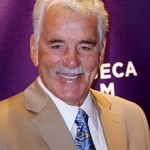


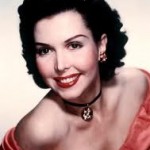
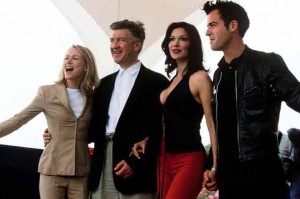
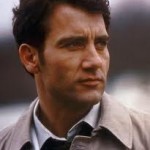
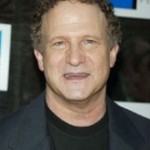

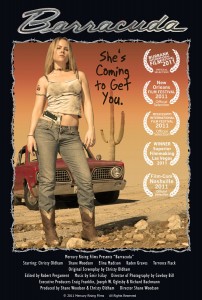
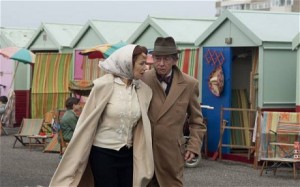
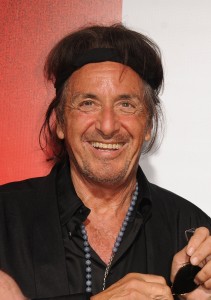





From FNB readers